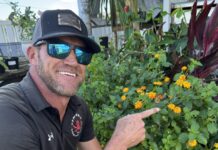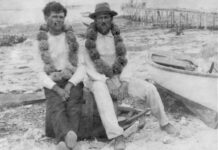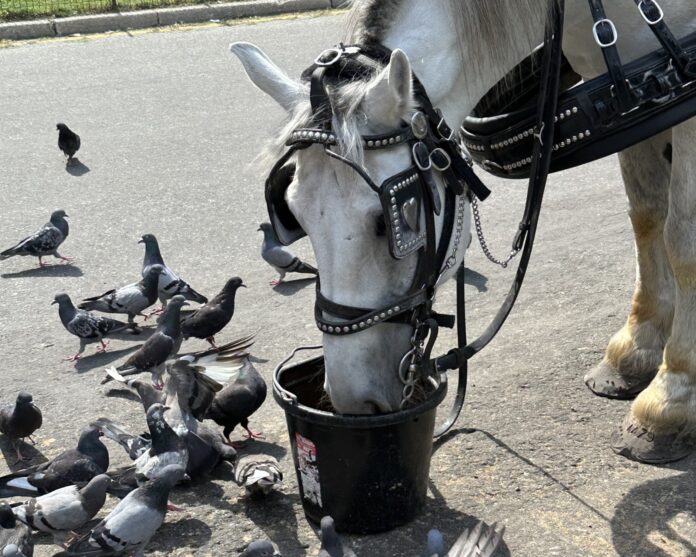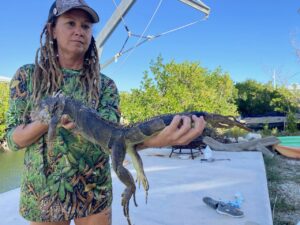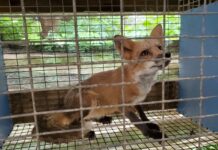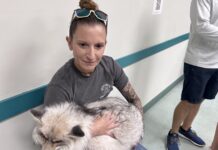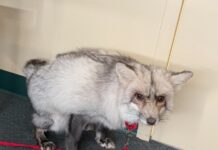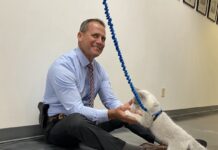Hi friends! Reef the fox here with your weekly “Reef’s Report.”
My mom, Nicole Navarro, returned from her trip to New York City last week and debriefed me on her days there. She was given a ticket to see the Broadway smash hit “Wicked,” and she even got a backstage tour. A sponsor for Jasper the fox is the makeup supervisor for the production, so mom got that VIP treatment, as she should. Mom was also able to catch up with some of her friends who are in the animal rights movement, and was even asked to join in on some outreach in Central Park to advocate against the horse-drawn carriage industry with our friends at NYCLASS (nyclass.org).
Many people see horse carriage rides and think it will be a unique, romantic or just fun way to see a city but let me tell you, those horses are not treated the way you might think. These city carriage horses are standing and walking on pavement which is not healthy for their hooves. Most of these horses are not large draft horses, which means they are not built to pull large loads like the carriage, driver and three to four passengers. They don’t go home at the end of the day to a beautiful barn outside the city. They live in a concrete building on the Hudson River and are yet again forced to stand on concrete in their small stalls.
Two years ago in New York City, a horse named Ryder collapsed in Hell’s Kitchen and a video went viral of his driver yelling at and whipping Ryder to get back up. It was determined that Ryder collapsed from exhaustion. Ryder was sent to a farm in upstate New York where he later had to be euthanized because of his continued poor health.
New York City council member Bob Holden is a fierce advocate to ban the carriage industry in the city.
“In 21st Century New York City, and frankly anywhere else, we should no longer see horses laboring to pull carriages in traffic; it’s a practice that’s outdated, inhumane and unsafe,” Holden said. “Passing a ban on horse-drawn carriages is a no-brainer decision that would protect horses and the public and benefit workers, marking an end to this cruel and antiquated industry.”
My mom was able to witness these horses working last week and she said it was depressing at best. When the horses are given feed, pigeons also surround the buckets dropping feces that the horse inadvertently consumes. The horses are lined up like forced labor workers and the look in their eyes is heartbreaking. So as your local reporter on all things animal-welfare, I am asking you that if you ever have the opportunity to take a carriage ride, don’t.
Anywho, that’s all for this week. Stay up to date on all things fox by visiting pawsitivebeginnings.org.
Until next time, Reef, over and out!







